Do you feel a little blindsided while driving in the late hours of the night? Then you should definitely upgrade your car’s headlights to 6000K headlight color for better visibility. In this guide, we will teach you all about headlight colors and give you tips on installing 6000k LED headlights. Ready to find the perfect headlight color for your vehicle? Let’s dive in.
Understanding 6000K Color

Before you choose a car headlight color, it is important that you understand the distinctions between them. The number represents the color temperature of the light measured in kelvin emitted by the headlight. The 6000k headlight appears as a bright white light with a subtle hint of blue light.
It is designed to mimic natural daylight, providing optimum luminescence. This color temperature is a popular choice for LED light bulbs because it provides optimum brightness while giving off a modern vibe.
Why Choose 6000K Headlights?
A good 6000k headlight provides superior visibility during nighttime, thus enhancing driving efficiency. Moreover, it provides a sleek and modern appearance, enhancing the vehicle’s overall aesthetic vibe. Additionally, it is energy efficient, making it a practical upgrade for any vehicle.
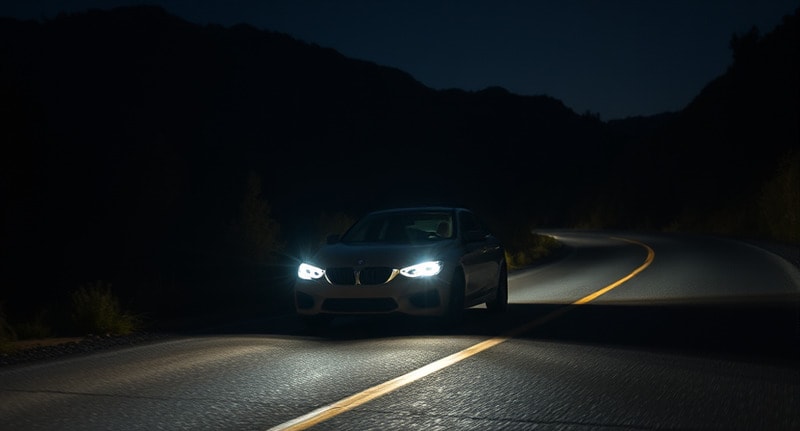
Understanding Color Temperature
While it may seem unusual, most colors are defined by the temperature they emit, and it is expressed in kelvin. The temperature determines the tone and hue of the light emitted by any source. In the case of headlights, the lower values represent lights that provide yellow-spectrum light.
While high values emit blue tint or cool tone lights, the 6000K range sits in the middle, offering a balanced and natural white light with excellent clarity.
Best Use Cases for 6000K Headlights
The light pattern of 6000k headlights is particularly useful in urban settings where clarity is a key component of road safety. These lights provide a proper beam pattern that is helpful in nighttime driving. Its cooler undertone also enhances the car’s aesthetic, thus appealing to modernistic customers.
Benefits and Drawbacks
Like all things in this world, the 6000k headlight color also has some drawbacks, along with its benefits. By understanding these pros and cons, you can make an educated decision about your car’s headlight color.
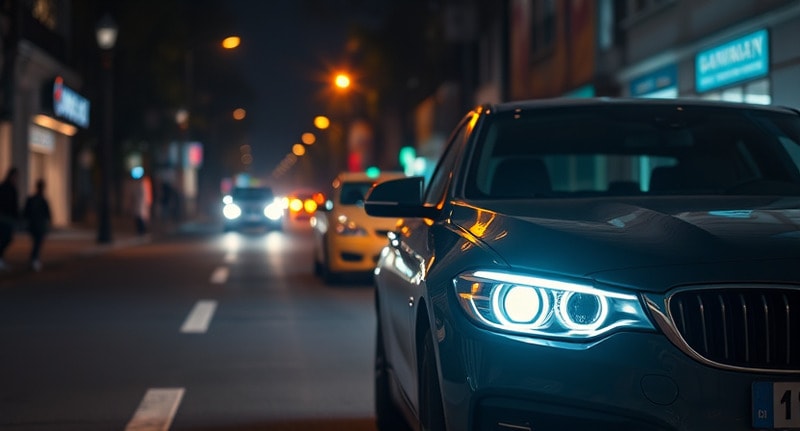
Benefits
The benefits of this light include increased nighttime visibility and road safety as the crisp, bright white light resembles daylight, making it easy to spot any hazards. Moreover, the high color temperature improves depth perception and illuminates a broader area.
The sleek appearance adds a contemporary and professional look to vehicles. This color range consumes less energy and offers a longer lifespan, making it highly energy efficient.
Drawbacks
The light output is reduced in fog and rain as 6000k scatters in poor weather, thus reducing visibility. It also produces a glare on the oncoming traffic, causing discomfort to other drivers. Some people have also found it less comfortable as a driving aid than warm-tone lights. Lastly, the cost of these lights is higher than other market options.
Here is a quick breakdown of the pros and cons of 6000K headlights.
| Aspect | Advantages | Disadvantages |
|---|---|---|
| Visibility | Enhanced clarity and depth perception | May scatter in fog or rain |
| Appearance | Modern and sleek look | Blue tint may not appeal to all drivers |
| Energy Efficiency | Long-lasting and cost-effective | None |
| Driver Comfort | Mimics natural daylight, reducing eye strain | Potential glare for oncoming traffic |
| Cost | Energy savings over time | Higher upfront investment |
How to Choose the Best 6000K LED Headlight Bulbs
There is a key to selecting the right LED headlights for your car. Only the right light will provide you with performance, longevity, and safety. You can choose the best 6000K headlight LED bulb by following the key factors mentioned below.
Key Factors to Consider
The first thing to look for in a car’s headlight is its brightness or lumens. You should look for those that offer sufficient brightness without creating excessive glare for oncoming traffic. The lumens rating between 6,000 and 10,000 is ideal for optimal visibility.

As light emissions generate heat, the light bulbs tend to overheat, which reduces their lifespan. You should look for LED bulbs with built-in cooling mechanisms, such as aluminum housings or integrated fans.
Before you purchase an LED bulb, you should verify that the bulb type is compatible with your vehicle to avoid any issues during installation. Lastly, opt for trusted brands that provide warranties and reliable after-sales support.
Avoid Cheap Products

Perhaps the most important factor while purchasing an LED bulb for your car is to avoid buying aftermarket, used, or cheap products. Such substandard bulbs often come with risks like flickering and insufficient brightness, becoming a hazard. Moreover, they are prone to wear, thus degrading faster than a quality product.
Comparison with Other Options
The unique characteristic of 6000k makes it ideal for headlights when seen in comparison with other color temperatures. However, when choosing between different headlight colors, it’s essential to consider the specific needs and preferences of the driver. Here is a concise comparison of 6000K headlights with other colors.
6000K vs. Lower Range
The lower-range, 4300K headlight is a warm white-tone headlight that emits yellowish light similar to that of halogen bulbs. While it offers less brightness than 6000K, it also offers a glare-free driving experience as a benefit. These are also ideal for foggy or rainy conditions due to better penetration.
On the other hand, 6000K provides a bright, crisp white light that is better suited for clear nights and modern aesthetics.
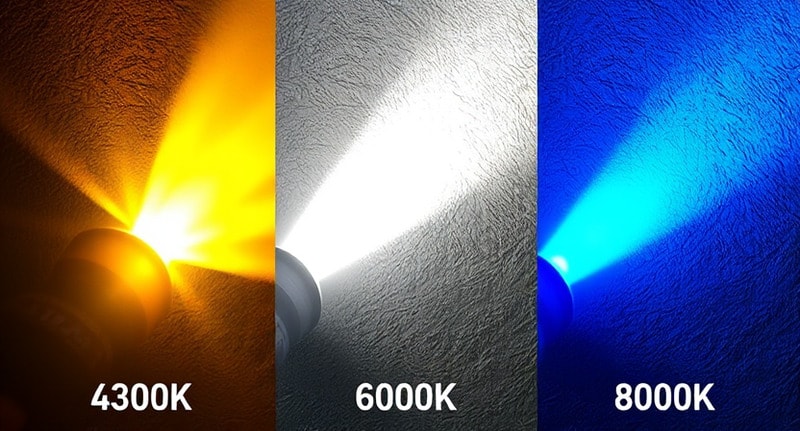
6000K vs. Higher Range
The cool-toned 8000 K-10000 K headlights produce a striking blue light, which is visually appealing. But it has reduced penetration in fog and rain, making it a less practical option.
While 6000K provides a bluish tint in the same way, it is a balance of warm tones as well, making it a versatile option.
How to Install 6000K LED Headlights
If you are sold on the benefits of 6000K LED headlights for your vehicle, then it is time you learn how to install them as well. Here is an easy-to-follow guide on installing LED headlights.
Preparation Steps
Every project requires some preparation, that is, if you wish it to be completed successfully. The preparation steps for installing LED headlights involve confirming your vehicle’s existing headlight system and bulb type. Make sure the headlight and bulb type are compatible with your car before making the purchase.
Secondly, gather all the tools required to complete the operation, including gloves, screwdrivers, the LED kit, and its product manual.
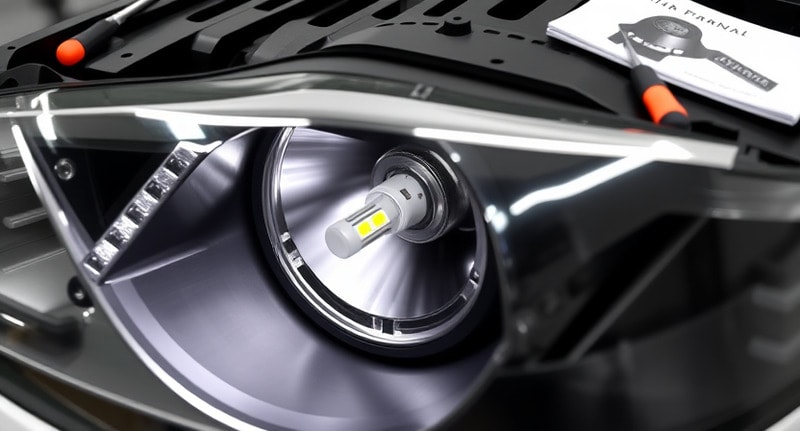
Step-by-Step Installation Guide
Here are five simple steps you need to follow to successfully replace and install your new 6000K headlights.
- Turn off the vehicle and disconnect the battery to avoid electrical issues. Open the hood and locate the headlight assembly.
- Carefully detach the existing bulbs. Avoid touching the glass surface of halogen bulbs as oils from your hands can reduce their lifespan.
- Place the new LED bulbs into the housing, ensuring they are secured properly. Most bulbs have a locking mechanism to hold them in place.
- Connect necessary accessories such as CANBUS decoders or resistors to resolve compatibility issues and prevent flickering.
- Turn on the headlights to verify functionality. Adjust the beam angle to ensure proper alignment, adhering to legal and safety standards.

Common Issues & Fixes
Even after following the instructions to the letter, if you come across some issues, do not panic, as it is normal. Here are some common issues you might encounter and how to fix them as well.
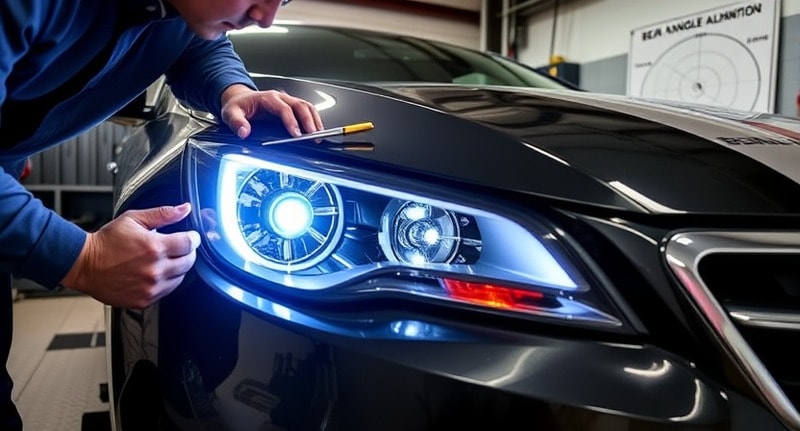
- Flickering or Dim Lights: It is usually caused by wiring issues or incompatible decoders. Check the wiring and ensure all connections are secure. If the decoder is incompatible with your vehicle’s electrical system, then you may need additional decoders.
- Incorrect Beam Angle or Low Beam: It happens due to misalignment. You can use the adjustment screws on the headlight assembly to align the beam properly.
- Moisture in Housing: Seal the headlight assembly tightly after installation to prevent water entry in the system. While it is not an imminent issue, it can cause serious problems in the future.
Regulations & Recommendations for Usage
As a responsible citizen and driver, it is important that you follow local regulations to maintain safety standards in your community. It is crucial to follow any regulations regarding 6000K LED headlights to avoid legal penalties and ensure road safety.
Legal Concerns
Check with local authorities on the maximum brightness allowed for headlights in your region. Some areas may have restrictions on brightness (lumens) or color temperatures of headlights. While 6000K is generally legal, it is always better to confirm with local law agencies than to face penalties.
Compliance Tips
In order to comply with street-legal assurance, you should only use headlights certified by recognized organizations such as the DOT (U.S.) or ECE (Europe). Moreover, make sure your headlights are properly aligned by testing them after installation. Misaligned headlights can dazzle oncoming traffic and may result in fines.
Safety Suggestions
Ensure regular maintenance of your headlight by inspecting your headlight assembly for dirt, damage, misalignment, or water damage. Clean the lenses regularly to maintain brightness and ensure the beam pattern remains sharp to ensure optimal performance.
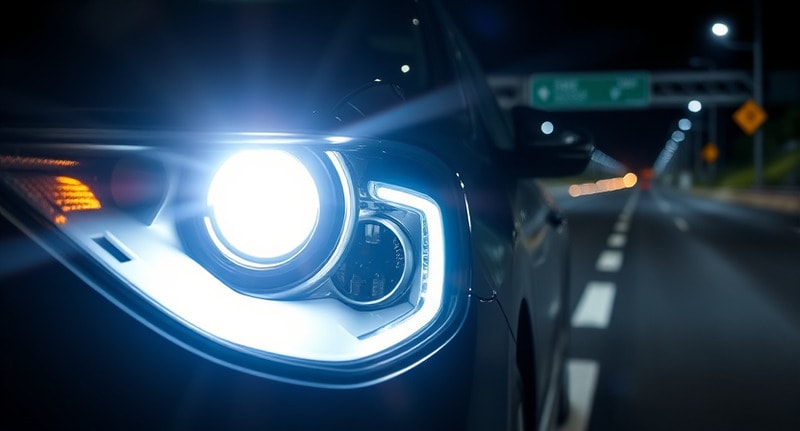
Lastly, ensure your vehicle’s electrical system can handle the new bulbs without strain to avoid overloading the system. By following our safety suggestions and compliance tips, you not only ensure a smooth drive but also save yourself from facing hefty fines.
Frequently Asked Questions
Q. What is the difference between 6000k and 4300k headlight color?
A. 6000K produces a bright white light with a faint bluish hue, similar to daylight. In contrast, 4300K produces a warm white light with a yellowish hue, which can be chosen for comfort and improved penetration in foggy weather.
Q. Is 6000k headlight color suitable for fog lights?
A. 6000K is not appropriate for fog lights because of its bluish hue, which can generate glare and limit visibility in fog or rain. A warmer color temperature, such as 3000K or 4300K, is more appropriate for foggy conditions.
Q. What brightness is 6000K?
A. 6000K refers to the color temperature, not brightness. However, LED headlights in this range typically provide high lumens (brightness).
Q. Is 6000K light bad for the eyes?
A. Prolonged exposure to bright 6000K light may cause eye strain or discomfort, especially at night. Hence, you should not stare straight into such a high-beam car headlight for a longer duration. However, while on the road, the exposure is limited and does not cause much discomfort.
Q. What Kelvin is best for night driving?
A. The best Kelvin for night driving is 4000K to 6000K, as it provides excellent visibility for nighttime, with its hue resembling the daytime white light with a tinge of blue to pierce through the darkness.
Conclusion
The 6000K headlight color has various advantages, including improved nighttime visibility, a more modern appearance, and energy-efficient performance. Its brilliant white light with a little blue tint makes it ideal for car headlights and household lighting applications where clarity is critical.
If you are considering upgrading your car’s headlight bulbs, then it is a great option. You can DIY the whole project by following our guidelines, provided you have the right set of tools. However, if you lack technical expertise and want a proper beam pattern, then choosing an expert is a better-suited option.
Request Your Free Sample of 6000K Headlight Bulbs Now!
Dominating the market since our establishment in 2008, Car Light Vision has been providing the global market with the best automotive headlights. If you are a true car enthusiast, then choose one of our trusty headlight bulbs to enhance your car’s functionality.
If you are confused, you can contact our expert for a free consultation and discover the right type of headlight for your car. Upgrade your lighting for unparalleled safety, style, and performance!




